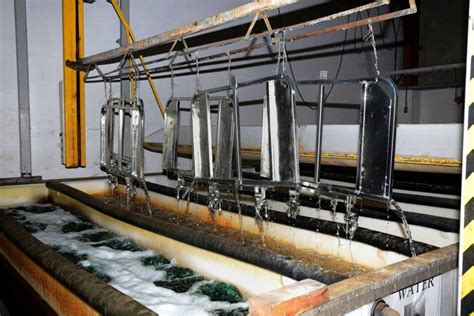Safe and Effective Gold Plating Removal from Silver
Gold-plated silver items, while beautiful, can lose their luster over time. The gold plating may wear thin, revealing the underlying silver, or you may simply want to restore the silver's original shine. Removing gold plating from silver requires careful technique to avoid damaging the base metal. This article will explore safe and effective methods, addressing common concerns and answering frequently asked questions.
Why Remove Gold Plating from Silver?
Several reasons may prompt you to remove gold plating from silver:
- Restoration: Removing the gold plating reveals the original silver, allowing for cleaning and polishing to restore its shine. This is particularly appealing for antique or heirloom silver pieces.
- Repair: If the gold plating is severely damaged or chipped, removal might be necessary before undertaking repairs.
- Replating: Removing the old gold plating allows for a professional replating with a fresh layer of gold, renewing the item's appearance.
- Allergic Reactions: Some individuals are allergic to certain metals found in gold plating, making removal a necessity for comfort and safety.
Methods for Removing Gold Plating from Silver
Several methods can remove gold plating, each with varying levels of effectiveness and safety. It's crucial to choose the method most suitable for the item's size, condition, and your level of experience. Always test any method on an inconspicuous area first to ensure it doesn't damage the silver.
1. Chemical Stripping: The Most Effective, But Requires Caution
Chemical stripping is the most effective method for removing gold plating, but it requires careful handling due to the corrosive nature of the chemicals involved. These solutions are typically available from jewelry supply companies and should be used strictly according to the manufacturer's instructions. Proper ventilation and protective gear (gloves, eye protection) are essential.
- Process: The silver piece is immersed in the stripping solution for a specified period. The solution dissolves the gold plating, leaving the silver intact.
- Pros: Highly effective and efficient for complete gold plating removal.
- Cons: Requires careful handling, protective equipment, and proper disposal of the chemical solution. Can be damaging to the silver if used improperly.
2. Electrolytic Stripping: A Controlled Chemical Process
Electrolytic stripping uses an electric current to remove the gold plating. This method offers more control over the stripping process compared to chemical immersion. It's generally considered safer than chemical stripping but still requires specialized equipment and knowledge. This process is best left to professionals.
- Process: The item is connected to a negative electrode in an electrolyte solution, while another electrode is connected to the positive terminal. The electric current facilitates the removal of the gold plating.
- Pros: More controlled process than chemical stripping, resulting in less damage to the underlying silver.
- Cons: Requires specialized equipment and expertise.
3. Mechanical Abrasion: For Minor Plating Removal
For minor gold plating imperfections or a thin layer of plating, very fine sandpaper or a specialized polishing compound can be used to gently abrade the gold. This is a slower and less precise method, and it carries the risk of scratching the silver if not done carefully. This approach is not recommended for heavily plated items or delicate pieces.
- Process: Use extremely fine sandpaper (at least 600 grit) or a polishing compound designed for silver, working gently in small, circular motions.
- Pros: Simple and readily available tools are needed.
- Cons: Time-consuming, prone to scratching, and unlikely to remove all the plating.
Frequently Asked Questions (FAQs)
How do I know if my silver is gold-plated?
Several methods can determine if your silver is gold-plated. A jeweler can easily identify gold plating using various techniques, including testing the metal's composition. You can also try a simple magnet test; gold is non-magnetic, so if a magnet doesn't stick, it could indicate gold plating. However, this isn't a foolproof method.
Can I remove gold plating at home?
While some methods can be attempted at home (such as mechanical abrasion), chemical and electrolytic stripping are best left to professionals with the appropriate experience, equipment, and safety precautions.
What happens if I damage the silver while removing the gold plating?
Damaging the underlying silver is a significant risk when removing gold plating. Improper techniques can lead to scratches, pitting, or even distortion of the piece. Professional services minimize this risk.
What is the cost of gold plating removal?
The cost varies greatly depending on the size, complexity, and method used. Contact a local jeweler for a quote.
Conclusion
Removing gold plating from silver can restore the beauty of an antique or simply refresh a piece of jewelry. While some methods can be attempted at home, it's crucial to exercise caution and choose a method appropriate for your skills and the item's condition. For significant gold plating removal or delicate items, professional assistance from a reputable jeweler is highly recommended to avoid irreversible damage. Remember, safety and preservation of your silver piece are paramount.

